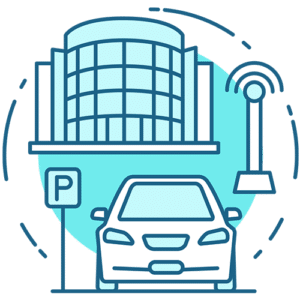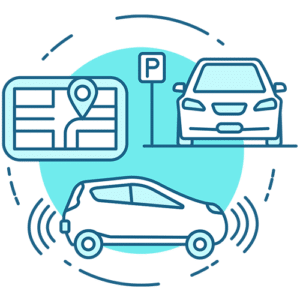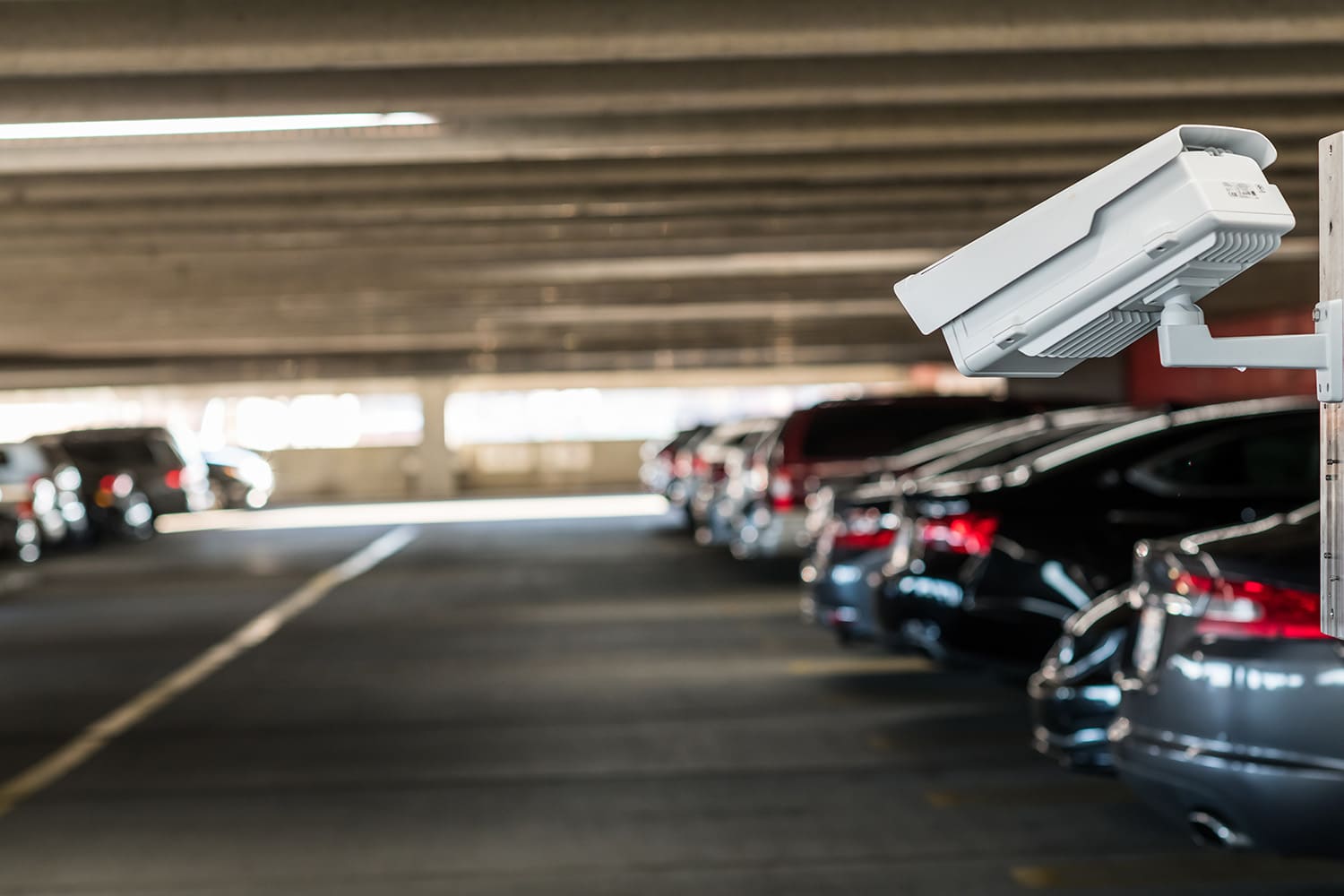
A Glimpse of the Future
From the Editor Melissa Rysak, editorrysak@parking-mobility.orgAt the IPMI Leadership Summit
Share:
Share:


Istockphoto / wilkat / irmetov / lena markley
Artificial Intelligence (AI) is a broad and evolving field that encompasses the development of computer systems capable of performing tasks typically requiring human intelligence. Some of these tasks include learning, reasoning, problem-solving, perception, language understanding, and even decision-making. The concept of AI has been around for centuries, with early ideas rooted in mythology and ancient tales of mechanical beings. However, it wasn’t until the mid-20th century that AI emerged as a formal discipline. Although AI has been around for some time, it is constantly evolving and has new aspects; one specifically—Generative AI.
AI today is way smarter and more accessible than what we had five years ago or even last year. Before, AI was like a powerful robot following strict rules that people programmed into it. But now, AI has become more like a creative writer. Instead of being told exactly what to do, it learns from tons of examples and can come up with its own ideas and creations. Think of it like a robot chef—in the past, it would only make dishes you told it, step by step. Now, with more advanced Generative AI, it’s more like a chef that has inherent culinary experience and can create delicious new meals of its own creation, without needing much instruction at all.
Generative AI is a broad label describing any type of artificial intelligence (AI) that can produce new text, images,
video, or audio clips.
Technically, this type of
AI learns patterns from
training data and generates
new, unique outputs with the
same statistical properties.
istockphoto / Shutter2U
The collective parking, transportation, and mobility profession has been using AI for a long time now, pre-dating the release of the current Generative AI models. A simple example is LPR [License Plate Recognition]. So, to the parking, transportation and mobility industry professionals reading this, we deserve some credit for being early adopters of AI technology, before the hype!
The accessibility of information has greatly improved over time, thanks to advancements in technology. Just as the early internet was only accessible to a limited few with the right skills, the development of internet browsers like Netscape Navigator, Internet Explorer, and Mosaic made it more accessible to the public. These early browsers paved the way for the widespread adoption of the internet and set the stage for the accessibility and convenience we experience today. This is like the evolution of Generative AI which has launched accessibility of information into hyperdrive.
It takes the information users are looking for and presents it in an easily digestible format. It eliminates the need for users to manually gather and organize information, as AI does this for them. The hype around Generative AI lies in its increasing accessibility and growing dataset. It has made tasks like researching, writing, coding, and a multitude of other tasks much easier by providing prompts and generating content. AI tools are simply better ways of organizing information, just like how search engines improved the accessibility of information in the past.
Overall, Generative AI is revolutionizing the way we access and consume information. It has made complex tasks more accessible to the public, reducing the need for specialized skills or knowledge. With the continuous growth of its dataset, Generative AI is becoming an indispensable tool across almost all fields. It streamlines the process of finding answers and presents them in a format that is easy to understand and therefore make decisions on.
Let’s explore how AI is impacting the parking and mobility landscape. AI has been in use in the parking, transportation and mobility space since before November 2022, when ChatGPT was first released, and it became more mainstream.
One of the most common applications of AI in parking is vehicle identification using LPR technology. AI algorithms analyze license plate data to identify and record vehicles as they enter and exit parking facilities or for on-street enforcement. This not only streamlines access control and ensures accurate billing, saving time for both parking operators and users, and makes enforcement more efficient and accurate.
AI algorithms analyze license plate data to identify and record vehicles as they enter and exit parking facilities or for on-street enforcement.
This not only streamlines access control and ensures accurate billing, saving time for both parking operators and users, and makes enforcement more efficient and accurate.
Shutterstock / Art Stock Creative
In addition to LPR, AI is making strides in recognizing vehicles through other means, such as vehicle shape and color analysis. This approach enhances identification in cases where LPR may not be feasible, ensuring that no vehicle goes unnoticed in parking facilities. In the past several years, as curb management has proven to be an important issue in our industry, many new technology players have brought forward solutions using AI to better manage the curb. Image-based curb management technologies use video analytics to identify and distinguish between various curb activities. For example, are we seeing a delivery vehicle making a delivery or is it a disabled box truck that is stuck along the curb? The use of AI in getting a better and more robust understanding of our curb has been informative and game changing for the management of it.
Computer vision systems powered by AI can accurately identify and track not only vehicles but also pedestrians, enhancing safety and security on the roads. This technology is instrumental in developing advanced driver assistance systems (ADAS) and supporting the implementation of smart city initiatives focused on pedestrian safety.
AI’s pattern matching capabilities are invaluable for identifying irregularities in parking facilities. As an example, AI can detect unauthorized vehicles or unusual parking patterns, aiding in maintaining security and efficiency. This technology provides parking operators with real-time insights, enabling them to take prompt action when necessary. More recently, this technology is being used to detect suspicious or concerning behavior amongst people of interest; preventing injury or crime.
With the increasing popularity of cycling as a sustainable mode of transportation, AI plays a crucial role in managing bike lanes efficiently. Equipped with sensors and cameras, AI algorithms can monitor bike lanes, alerting authorities to any obstructions and ensuring the safety of cyclists.
Dynamic pricing is another area where AI is helping parking. Real-time data analysis allows parking operators in either an off-street or on-street environment to adjust prices based on demand, encouraging efficient use of parking spaces and reducing congestion during peak hours. This not only benefits parking operators but also provides a more convenient and cost-effective experience for drivers.
When it comes to our city streets, AI is making a significant impact in traffic congestion management. Through advanced algorithms and real-time data analysis, AI systems can predict traffic patterns, identify congestion points, and suggest alternative routes for vehicles. This not only helps in reducing the time spent in traffic but also contributes to a more efficient and streamlined flow of vehicles on the roads. Cities are increasingly adopting smart traffic management systems powered by AI to alleviate congestion issues.
Beyond these specific applications, AI-generated analytics offer a broader perspective on the use of urban space. By analyzing data from various sensors and cameras, AI generates insights into traffic patterns, parking occupancy, and user behavior. This valuable information empowers the parking and mobility industry to make informed decisions about urban design, parking policies, and transportation infrastructure, ultimately leading to more efficient and sustainable cities.
AI has the potential to significantly impact the parking, transportation, and mobility industry by enhancing productivity. Through automation and streamlining processes, AI can improve the operations of parking facilities and transportation systems.

One area with immense potential is the use of Generative AI to help novice Excel users become “power users.” Generative AI tools can analyze parking transaction trends with simple prompts, empowering parking operations teams with limited Excel knowledge to perform powerful data analysis.
AI is also reshaping job functions in customer service, data analytics, and job creation. AI-powered chatbots and virtual assistants enhance customer service by providing real-time assistance and answering queries, freeing up human staff to focus on more complex tasks. Data analytics powered by AI can offer insights into parking patterns, user behavior, and traffic trends, enabling better decision-making and optimizing parking space utilization.
While AI streamlines certain job functions, it also creates new roles in machine learning, data science, and AI engineering. These advancements open opportunities for specialized jobs, contributing to economic growth and innovation.
However, concerns about job displacement persist. Routine tasks like manual ticketing or basic customer inquiries may decline, potentially affecting certain roles. To address this, reskilling and upskilling initiatives are necessary to prepare the workforce for evolving job demands, ensuring a smooth transition and a balance between technological progress and job stability.
It is important to note that certain job functions involving human interaction and personalized customer service are less likely to be impacted by AI. These roles require empathy, understanding, and a personal touch that AI cannot replicate. Therefore, while AI will transform parts of the parking and mobility industry, there will always be a need for human involvement to provide exceptional client service and address unique customer needs.
We posed the same question to three different generative AI tools and got three different answers, just like how you can ask three different people the same question and get three different answers. So too is the case with AI—the lesson here is the tech is only as good as the underlying data and the algorithms that make it up. Sometimes they listen to you and sometimes they do not. As an example, we asked CoPilot for three sentences max, and they got excited and wrote a lot more. For reference here is the prompt that we gave each tool:
“In three sentences tell me what the future of parking is in the next 100 years?”
The responses we got varied in the degree of detail, their apparent optimism versus reality, and the areas that they focused on. ChatGPT provided more detailed and imaginative scenarios, while Bard and CoPilot were somewhat more focused on broader trends. ChatGPT leaned towards an optimistic, futuristic view, while CoPilot balanced insights with current challenges and predicts potential issues in the parking industry. Bard emphasized technological advancements, ChatGPT focused on sustainability and integration into public transportation, and CoPilot delved into the challenges of transparency and the economic costs associated with parking.

Predicting the future of parking over the next 100 years is challenging, but advancements in technology suggest a shift towards autonomous vehicles and smart city infrastructure. Smart parking systems utilizing sensors and AI may become prevalent, optimizing space, and reducing congestion. The integration of electric and autonomous vehicles could further impact traditional parking norms, potentially leading to more efficient and automated parking solutions.

Cars might park themselves in hidden underground networks, seamlessly integrated into green spaces. Forget asphalt lots: imagine vibrant parks replacing them, solar canopies powering self-driving vehicles, and AI optimizing every inch of available space. Mobility hubs, not just parking, will merge with public transportation, offering seamless journeys from car to train or bike. Buckle up for a greener, smarter, and less stressful parking future.

The parking industry is undergoing a transformation due to the advent of new technologies and business models. According to a report by Deloitte, the entire way we travel from point A to point B is changing, creating a new ecosystem of personal mobility, with implications going beyond the automotive industry. The report also suggests that the parking experience could be the next aspect of modern life to be upended by new technologies and business models.
The parking industry is relatively stable and consolidated, generating roughly $30 billion in gross parking revenue annually in the US. However, the industry is expected to change significantly as shared and ultimately autonomous vehicles become fixtures of the landscape. Some incumbent parking players as well as new technology entrants are already working to capitalize on these developments by creating new and innovative solutions to regulate demand, optimize supply, and better meet consumer needs.
Some of the key changes that are expected to shape the parking industry in 2023 include the integration of smart technology, the shift towards sustainable solutions, the trend towards shared mobility, and the changing nature of urban development. Recent trends in parking and reports reveal that the sector can generate an estimated “CAGR of 11.1% from 2022 to 2030.”
Referenced sources:
1 www.deloitte.com | 2 forbes.com | 3 parking.net | 4 parkingconcepts.com | 5 cnbc.com
As we look into the future of artificial intelligence and generative AI, particularly in the context of parking, mobility, and transportation sectors, it becomes evident that we are on the cusp of a revolution in the way we interact with urban spaces. The convergence of AI and Generative AI will continue to bring about unprecedented advancements in optimizing parking solutions, enhancing mobility, and transforming transportation systems.
AI-powered sensors and cameras can analyze parking patterns, predict demand, and guide drivers to available parking spaces in real-time. Generative AI takes this a step further by creating dynamic algorithms that adapt to changing conditions, such as events, traffic fluctuations, and seasonal variations, to optimize parking space allocation.

Furthermore, the integration of AI in transportation systems is paving the way for autonomous vehicles. Generative AI algorithms are instrumental in simulating diverse driving scenarios, improving the decision-making capabilities of self-driving cars, and enhancing overall safety on the roads.
As we move forward, the synergy between AI and Generative AI is likely to foster innovation in shared mobility services. These technologies can optimize fleet management, predict user demand, and dynamically adjust service offerings to meet the evolving needs of users. The result is a more efficient, sustainable, and user-centric approach to transportation.
Although we have only scratched the surface on this topic, not mentioning how AI will continue to evolve vehicles, micro mobility offerings, the user journey as well as Governance and Policy, the future trajectory of AI and Generative AI in parking, mobility, and transportation sectors is marked by unprecedented advancements. These technologies have the potential to create smarter, more adaptive urban environments, ultimately transforming the way we navigate and experience our cities. The ongoing developments in this field hold promise for a future where parking, transportation and mobility are not just intelligent but also seamlessly integrated into our daily lives. ◆

Carmen Donnell, CAPP, is Managing Director of PaybyPhone North America, a member of the IPMI Board of Directors, and Co-Chair of the IPMI Technology Committee.

Nick Mazzenga, PE, is an Associate at Kimley-Horn, and is Co-Chair of the IPMI Technology Committee.

From the Editor Melissa Rysak, editorrysak@parking-mobility.orgAt the IPMI Leadership Summit


Understanding Where Artificial Intelligence Meets Parking

How ELSAG® Plate Reader Solutions For Parking Management Work

How ELSAG® Plate Reader Solutions For Parking Management Work


From the Editor Melissa Rysak, editorrysak@parking-mobility.org At the IPMI Leadership
Parking & Mobility is IPMI’s flagship publication, covering the news, trends, analysis, technologies, and people of the parking and mobility industry, and how it affects and influences communities around the world.
| Cookie | Duration | Description |
|---|---|---|
| cookielawinfo-checkbox-advertisement | 1 year | Set by the GDPR Cookie Consent plugin, this cookie is used to record the user consent for the cookies in the "Advertisement" category . |
| cookielawinfo-checkbox-analytics | 11 months | This cookie is set by GDPR Cookie Consent plugin. The cookie is used to store the user consent for the cookies in the category "Analytics". |
| cookielawinfo-checkbox-functional | 11 months | The cookie is set by GDPR cookie consent to record the user consent for the cookies in the category "Functional". |
| cookielawinfo-checkbox-necessary | 11 months | This cookie is set by GDPR Cookie Consent plugin. The cookies is used to store the user consent for the cookies in the category "Necessary". |
| cookielawinfo-checkbox-others | 11 months | This cookie is set by GDPR Cookie Consent plugin. The cookie is used to store the user consent for the cookies in the category "Other. |
| cookielawinfo-checkbox-performance | 11 months | This cookie is set by GDPR Cookie Consent plugin. The cookie is used to store the user consent for the cookies in the category "Performance". |
| CookieLawInfoConsent | 1 year | Records the default button state of the corresponding category & the status of CCPA. It works only in coordination with the primary cookie. |
| elementor | never | This cookie is used by the website's WordPress theme. It allows the website owner to implement or change the website's content in real-time. |
| viewed_cookie_policy | 11 months | The cookie is set by the GDPR Cookie Consent plugin and is used to store whether or not user has consented to the use of cookies. It does not store any personal data. |
| Cookie | Duration | Description |
|---|---|---|
| _ga | 2 years | The _ga cookie, installed by Google Analytics, calculates visitor, session and campaign data and also keeps track of site usage for the site's analytics report. The cookie stores information anonymously and assigns a randomly generated number to recognize unique visitors. |
| _ga_02PMHW8YWC | 2 years | This cookie is installed by Google Analytics. |
| _ga_LC0QJJHM3J | 2 years | This cookie is installed by Google Analytics. |
| _ga_V9KYTSBYT2 | 2 years | This cookie is installed by Google Analytics. |
| iutk | 5 months 27 days | This cookie is used by Issuu analytic system to gather information regarding visitor activity on Issuu products. |
| Cookie | Duration | Description |
|---|---|---|
| mc | 1 year 1 month | Quantserve sets the mc cookie to anonymously track user behaviour on the website. |
| Cookie | Duration | Description |
|---|---|---|
| ultp_view_1052 | 1 day | No description |
| ultp_view_1058 | 1 day | No description |
| ultp_view_1060 | 1 day | No description |
| ultp_view_1064 | 1 day | No description |
| ultp_view_1068 | 1 day | No description |
| ultp_view_1070 | 1 day | No description |
| ultp_view_1072 | 1 day | No description |
| ultp_view_1078 | 1 day | No description |
| ultp_view_1082 | 1 day | No description |
| ultp_view_1088 | 1 day | No description |
| ultp_view_1100 | 1 day | No description |
| ultp_view_1103 | 1 day | No description |
| ultp_view_1114 | 1 day | No description |
| ultp_view_1118 | 1 day | No description |
| ultp_view_1122 | 1 day | No description |
| ultp_view_1125 | 1 day | No description |
| ultp_view_1130 | 1 day | No description |
| ultp_view_1132 | 1 day | No description |
| ultp_view_1135 | 1 day | No description |
| ultp_view_1541 | 1 day | No description |
| ultp_view_1554 | 1 day | No description |
| ultp_view_1557 | 1 day | No description |
| ultp_view_1560 | 1 day | No description |
| ultp_view_1563 | 1 day | No description |
| ultp_view_1568 | 1 day | No description |
| ultp_view_1572 | 1 day | No description |
| ultp_view_1576 | 1 day | No description |
| ultp_view_1580 | 1 day | No description |
| ultp_view_2305 | 1 day | No description |
| ultp_view_2321 | 1 day | No description |
| ultp_view_2338 | 1 day | No description |
| ultp_view_2342 | 1 day | No description |
| ultp_view_259 | 1 day | No description |
| ultp_view_270 | 1 day | No description |
| ultp_view_275 | 1 day | No description |
| ultp_view_286 | 1 day | No description |
| ultp_view_3074 | 1 day | No description |
| ultp_view_3115 | 1 day | No description |
| ultp_view_3334 | 1 day | No description |
| ultp_view_3336 | 1 day | No description |
| ultp_view_3338 | 1 day | No description |
| ultp_view_3340 | 1 day | No description |
| ultp_view_3346 | 1 day | No description |
| ultp_view_3354 | 1 day | No description |
| ultp_view_3361 | 1 day | No description |
| ultp_view_3367 | 1 day | No description |
| ultp_view_365 | 1 day | No description |
| ultp_view_367 | 1 day | No description |
| ultp_view_38 | 1 day | No description |
| ultp_view_3846 | 1 day | No description |